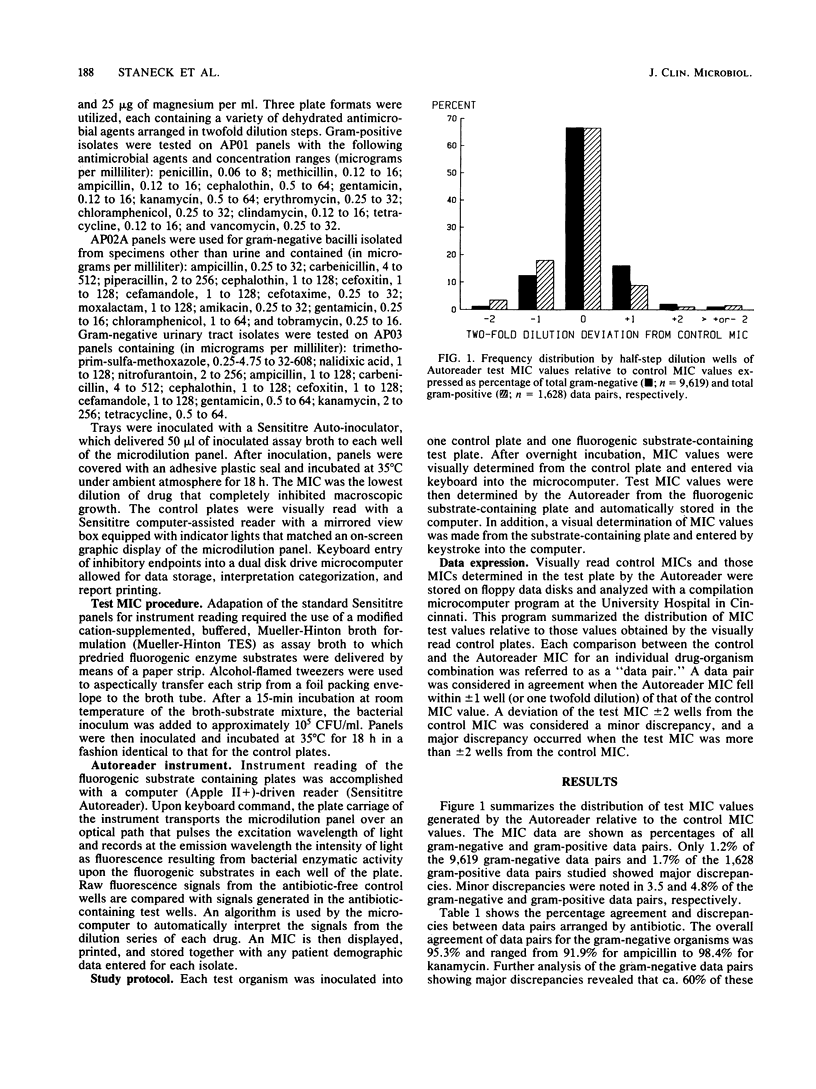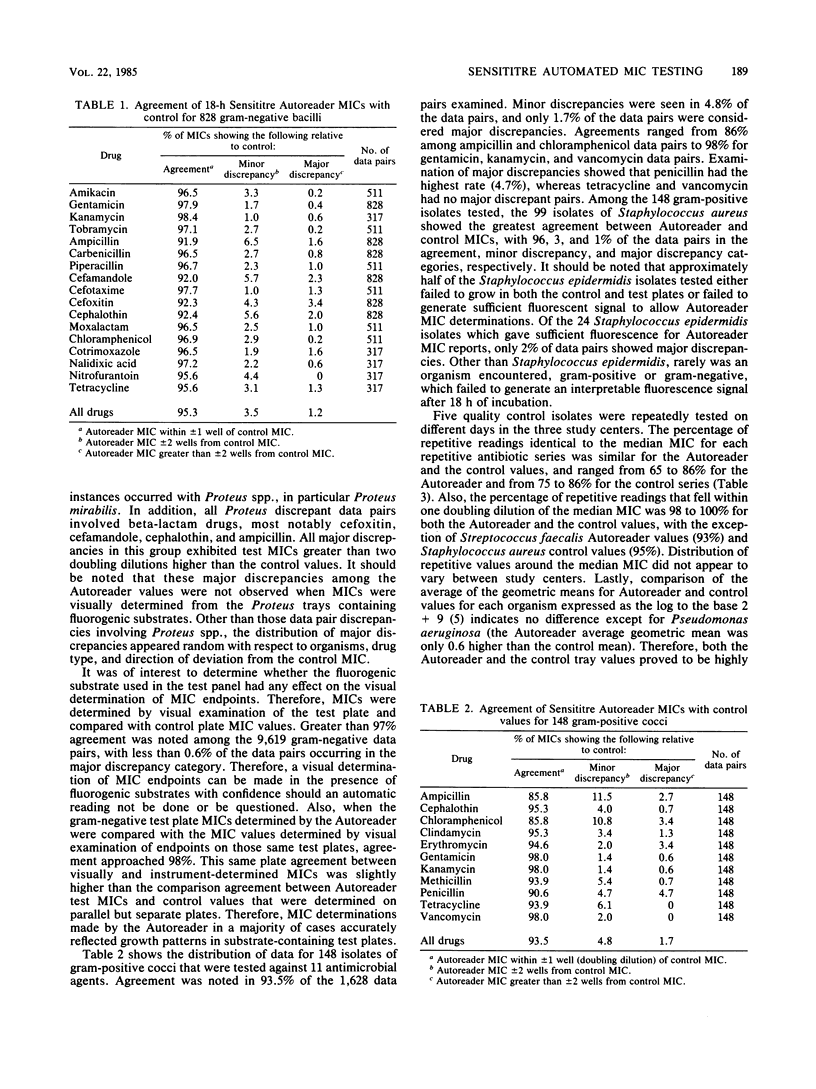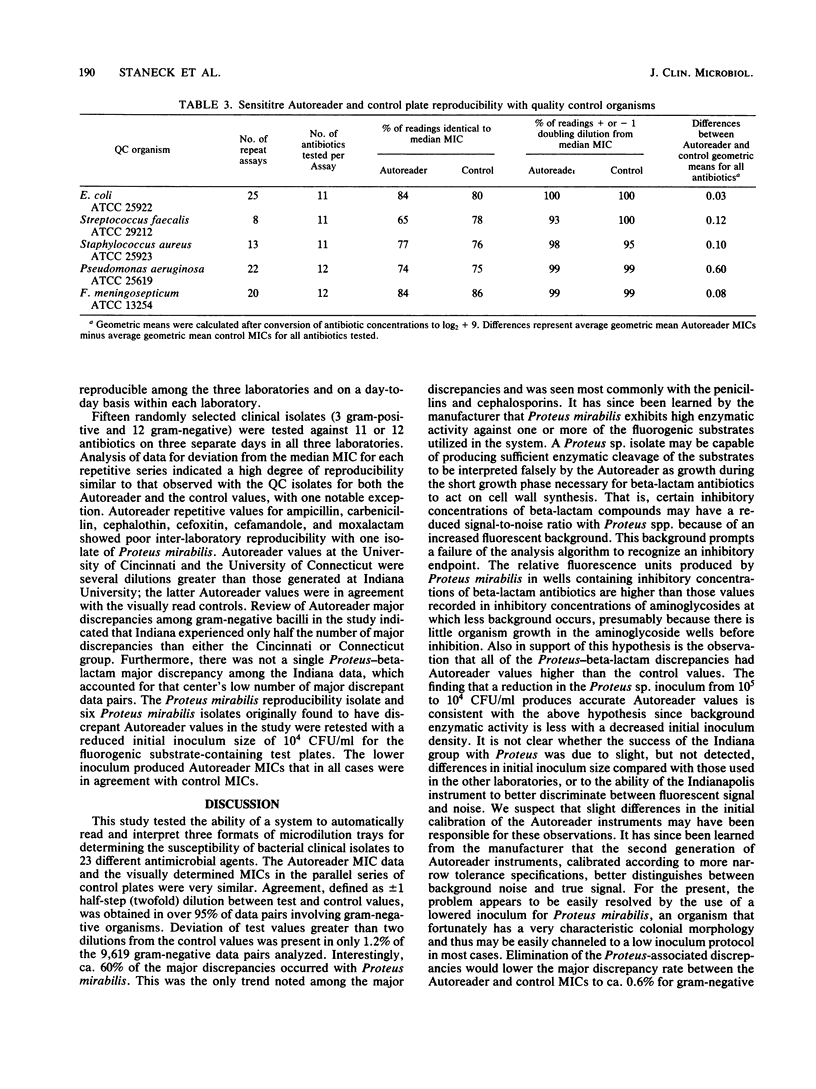Abstract
The Sensititre Autoreader is a microcomputer-driven instrument capable of automatically reading antimicrobial susceptibility microdilution trays. The instrument measures the fluorescence liberated by bacterial enzymatic activity on fluorogenic substrates as an indicator of growth in each well. A mathematical algorithm converts the fluorescent signals from an antimicrobial dilution series to an MIC endpoint. A three-center study evaluated the performance of the Autoreader in comparison with MIC determined visually in a duplicate set of control plates lacking fluorogenic substrate. Among 828 isolates of gram-negative bacilli tested against 17 antimicrobial agents, Autoreader 18-h MIC were within +/- 1 twofold dilution of control MIC values (agreement) in 95.3% of instances. In 3.5% of the instances, Autoreader values occurred +/- 2 half-step dilutions from control values (minor discrepancy), and in only 1.2% of instances did Autoreader values deviate from control values by greater than +/- 2 dilution steps (major discrepancy). Agreement, minor discrepancies, and major discrepancies were noted among 148 gram-positive cocci tested against 11 antimicrobial agents in 93.5, 4.8, and 1.7% of the instances, respectively. Over half of the major discrepancies noted with gram-negative bacilli occurred with Proteus mirabilis-beta-lactam combinations, a problem that was resolved when a lower initial inoculum was used. Inter-and intralaboratory reproducibility was excellent. Standard Sensititre susceptibility trays may be instrument read at 18 h reproducibly and accurately with only slight modification of conventional procedures to include fluorogenic enzyme substrates in the incubation broth.
Full text
PDF




Selected References
These references are in PubMed. This may not be the complete list of references from this article.
- DeGirolami P. C., Eichelberger K. A., Salfity L. C., Rizzo M. F. Evaluation of the AutoSCAN-3, a device for reading microdilution trays. J Clin Microbiol. 1983 Dec;18(6):1292–1295. doi: 10.1128/jcm.18.6.1292-1295.1983. [DOI] [PMC free article] [PubMed] [Google Scholar]
- Gavan T. L., Jones R. N., Barry A. L. Evaluation of the Sensititre system for quantitative antimicrobial drug susceptibility testing: a collaborative study. Antimicrob Agents Chemother. 1980 Mar;17(3):464–469. doi: 10.1128/aac.17.3.464. [DOI] [PMC free article] [PubMed] [Google Scholar]
- Jones R. N., Gavan T. L., Barry A. L. Evaluation of the sensititre microdilution antibiotic susceptibility system against recent clinical isolates: three-laboratory collaborative study. J Clin Microbiol. 1980 Apr;11(4):426–429. doi: 10.1128/jcm.11.4.426-429.1980. [DOI] [PMC free article] [PubMed] [Google Scholar]
- Staneck J. L., Vincelette J., Lamothe F., Polk E. A. Evaluation of the Sensititre system for identification of Enterobacteriaceae. J Clin Microbiol. 1983 Apr;17(4):647–654. doi: 10.1128/jcm.17.4.647-654.1983. [DOI] [PMC free article] [PubMed] [Google Scholar]
- Tilton R. C., Lieberman L., Gerlach E. H. Microdilution antibiotic susceptibility test: examination of certain variables. Appl Microbiol. 1973 Nov;26(5):658–665. doi: 10.1128/am.26.5.658-665.1973. [DOI] [PMC free article] [PubMed] [Google Scholar]
- Turner A., Hawkey P. M., Pedler S. J. Computer-assisted determination of antibiotic susceptibility in photometer-read microtiter plates. J Clin Microbiol. 1983 Oct;18(4):996–998. doi: 10.1128/jcm.18.4.996-998.1983. [DOI] [PMC free article] [PubMed] [Google Scholar]


